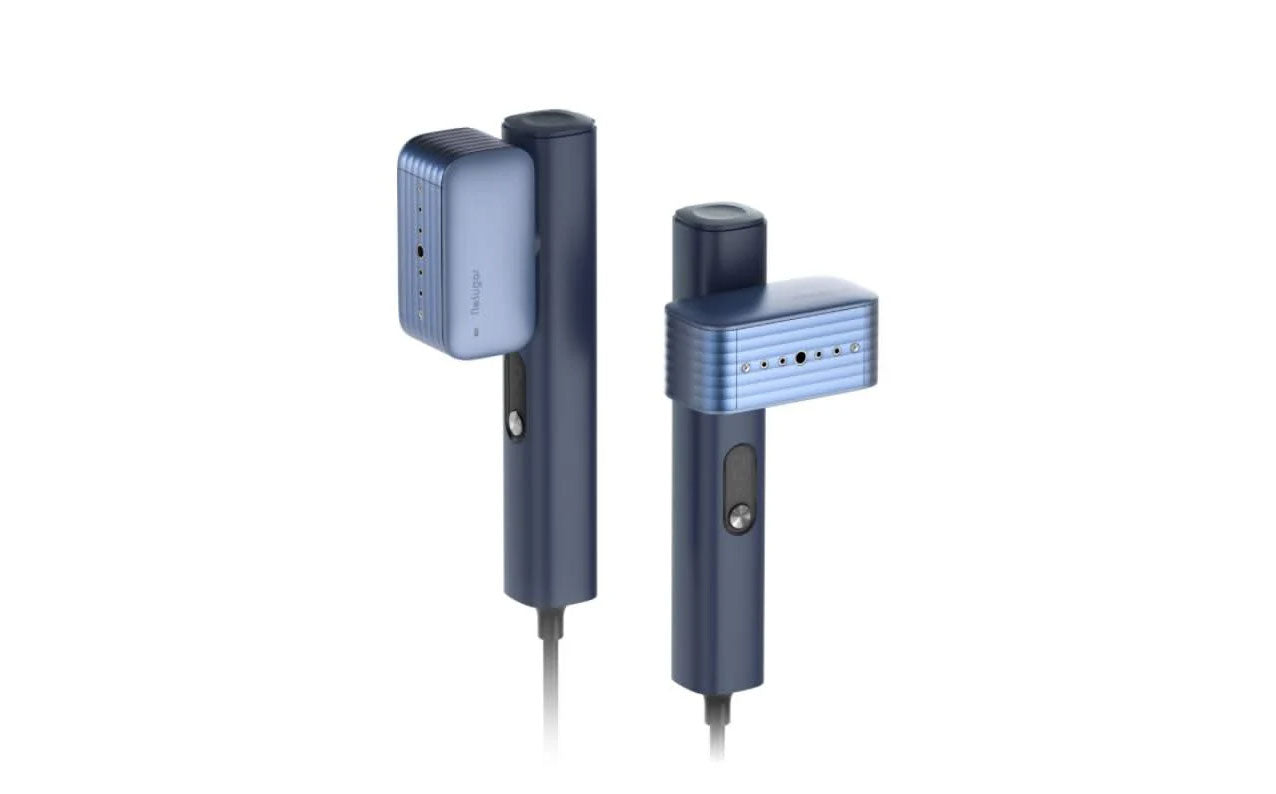I, a chef in the kitchen, and my clothes steam ironing machine
I am a chef.
Every morning at six thirty, I put on my apron, push open the heavy door of the kitchen, and the air hits you with that early morning chill and the lingering aroma of last night’s cooking. People always say the stove is where a chef goes to battle. For me, the first skirmish happens in the locker room — it’s me against a wrinkled jacket.
After a long shift surrounded by steam and grease, looking sharp is a real challenge. The uniform must be crisp, the hat can’t be drooping, and the apron must be tidy... Not only for the sake of appearance, but also because of the discipline and professionalism required in the kitchen. As for irons — I've used them enough to know the hassle: waiting for heat, juggling an ironing board, leaving shiny streaks, or worse, singeing a cuff. That changed one day when a buddy suggested I try a clothes steamer, and I realized I’d been fighting wrinkles the hard way all these years.
A small handheld steamer quietly changed my routine. It was a lightweight handheld. I first tried it before an early winter shift, with air that bit at your face. My uniform, which I had forgotten to dry after being washed last night, was all wrinkled. I panicked about being late, but my mate handed me a steamer, told me to hang the jacket on the locker door and sweep steam from top to bottom. It heated up in about 15 seconds, and in less than three minutes my uniform looked freshly pressed. I must’ve looked like a rookie chef who just nailed his first dish, completely stunned.
Since then the steamer stopped feeling optional — it became part of my morning prep ritual. Before going to work every day, I would steam my uniform like sharpening a knife; after the peak of meal production, if there were creases on my hat or apron, I would quickly deal with them using the steam machine before going out. This small change not only keeps me looking sharp but also gives me that sense of control - just like a knife in the kitchen needs to be sharp, the uniform in the kitchen also needs to be neat and tidy.
Why is a steam ironing machine more suitable for my profession?
I thought about it and realized there are several very practical reasons why a clothes steamer is suitable for chefs:
Speed matters: I don't have five spare minutes. A steamer that heats up in seconds is a lifesaver.
No setup hassle: our tiny locker room can't fit an ironing board — just hang the garment and steam.
Steam is gentler: most uniforms are cotton blends, and a hot iron can leave shiny patches. Steam relaxes the fibers without that pressed sheen.
Super portable: we do off-site gigs and catering — a small steamer slides into my bag much more easily than an iron.
Especially when attending events abroad, hotel irons were either ancient or grimy, and they might even damage the clothes. At a food fair in Paris I learned that hotel irons are hit-or-miss. I had a Nesugar steamer; the baker next door borrowed it, and soon we had a mini line steaming jackets—funnier than the espresso queue.
How to Choose an Effective Steamer: My Five Tips
Over the past few years, I have tried more than seven different types of steamers, including both affordable and high-end ones. Here are the key points that I genuinely want to share with anyone who’s in the same boat:
① Heating speed
Never underestimate heat-up time — if you only have a few minutes each morning, a long preheat eats into everything. I now use one that basically produces steam in about 15 seconds.
② Stable steam output
Look for steady steam output — bursts or gaps won't flatten thicker jackets. A good steamer maintains a consistent and even steam output, without sudden bursts or interruptions. Especially for thick chef jackets, unstable steam can cause the fabric to become wrinkled.
③ Water tank capacity
Water tank capacity — A 250–300ml tank usually handles a full uniform without being a burden. Small water tanks need frequent refilling, while very large ones add weight.
④ Leak-proof design
Leak-proof design matters. Cheap units can drip when tilted and leave water marks — a real annoyance. Many cheap machines will drip water when tilted, leaving water marks on the surface, which is very embarrassing.
⑤ Global voltage support
Global voltage support is crucial for overseas work. I once forgot a converter in Japan — lesson learned. Later, when choosing the device, I always pay attention to whether it supports the universal voltage of 100–240V. Some models of Nesugar directly indicate this, which is very considerate.
Practical Tips: The process of washing clothes actually has its "techniques" as well.
I used to think that ironing clothes was just about spraying water on them. But that's not the case. The right technique can make the clothes flatter and also save you a lot of effort.
Work top to bottom while keeping the fabric slightly taut with your free hand.
For the detailed areas, keep them close but not touching the steam nozzle.
Fabric treatment
Cotton uniforms: use higher steam and give one confident pass to set the shape.
Chef's hat (fabric): Use a low-speed brush and don't wet it too much.
Thick coat: Steam from the inside first, then shape it on the outside.
Finish properly: don't stuff the garment away right after steaming — let it hang a minute or two to dry and settle. Make sure everything’s fully dry before you throw it on—that’s key.
The kitchen environment poses some special challenges for the steamer.
Kitchens bring special challenges — humidity and grease speed up buildup inside the steamer. I once ignored cleaning the tank for too long, and a crusty layer of white scale built up inside, blocking half of the steam holes. The steam emitted from the machine was inconsistent in volume, and water marks appeared on my uniform. I honestly thought the steamer was busted.
Later I summarized several key points for maintenance:
Using only distilled water: especially in areas with hard water, it helps cut down on mineral buildup.
After each use, empty the water tank completely: Don’t skip this—seriously.
Regular cleaning: Every month, I will gently clean the interior with a mixture of white vinegar and water, then steam it and rinse it clean with water.
Keep the nozzle clean: If you notice any white deposits or blockages on the nozzle, first cool it down and then use a cotton swab to clean it.
These small habits add years to a machine; neglect tends to cause problems far sooner.
Some common questions and my responses
Has the steam stopped? First check water level, make sure the unit has fully heated, and see if the nozzle is blocked. (Don't laugh — I've forgotten to plug it in before.)
Is it dripping? That usually means you overfilled it or used it at a steep angle. Keep water below the fill line and operate mostly upright.
Is the steam fluctuating in intensity? If steam is fluctuating, scale buildup or a loose tank seal is likely; a proper descaling and reseating usually fixes it.
Final words: for me this is a little ritual — both practical and a quiet way to show respect for the job.
Some people might think being a chef is just about cooking great food. What does it matter if the clothes are wrinkled?
But in my opinion, a neatly pressed uniform represents respect for this profession. Whether I’m in a Michelin-star kitchen or running a street food stand, a clean and tidy appearance will make customers trust you, and also give me more confidence in the chaotic kitchen.
For me, the clothes steam iron is not just a small household appliance; it's more like a little ritual before starting each day.
When the steam rises and the wrinkles are gradually smoothed out, I know that a new day is about to begin.
If you are also a chef, or just want to make your life more streamlined...
I honestly recommend giving a good steamer a shot.
It doesn't have to be extremely expensive. The key points are that it's easy to use, convenient, and suits your own pace. If you, like me, often participate in overseas activities, remember to pay attention to portability and global voltage compatibility. For example, several models of Nesugar perform quite well in this regard.
It’s funny how small habits can snowball into big changes over time.
For me, this small thing was a steam ironing machine.
— A chef who always gets up at 5:30 in the morning, loves cooking and also enjoys wearing clean uniforms.






